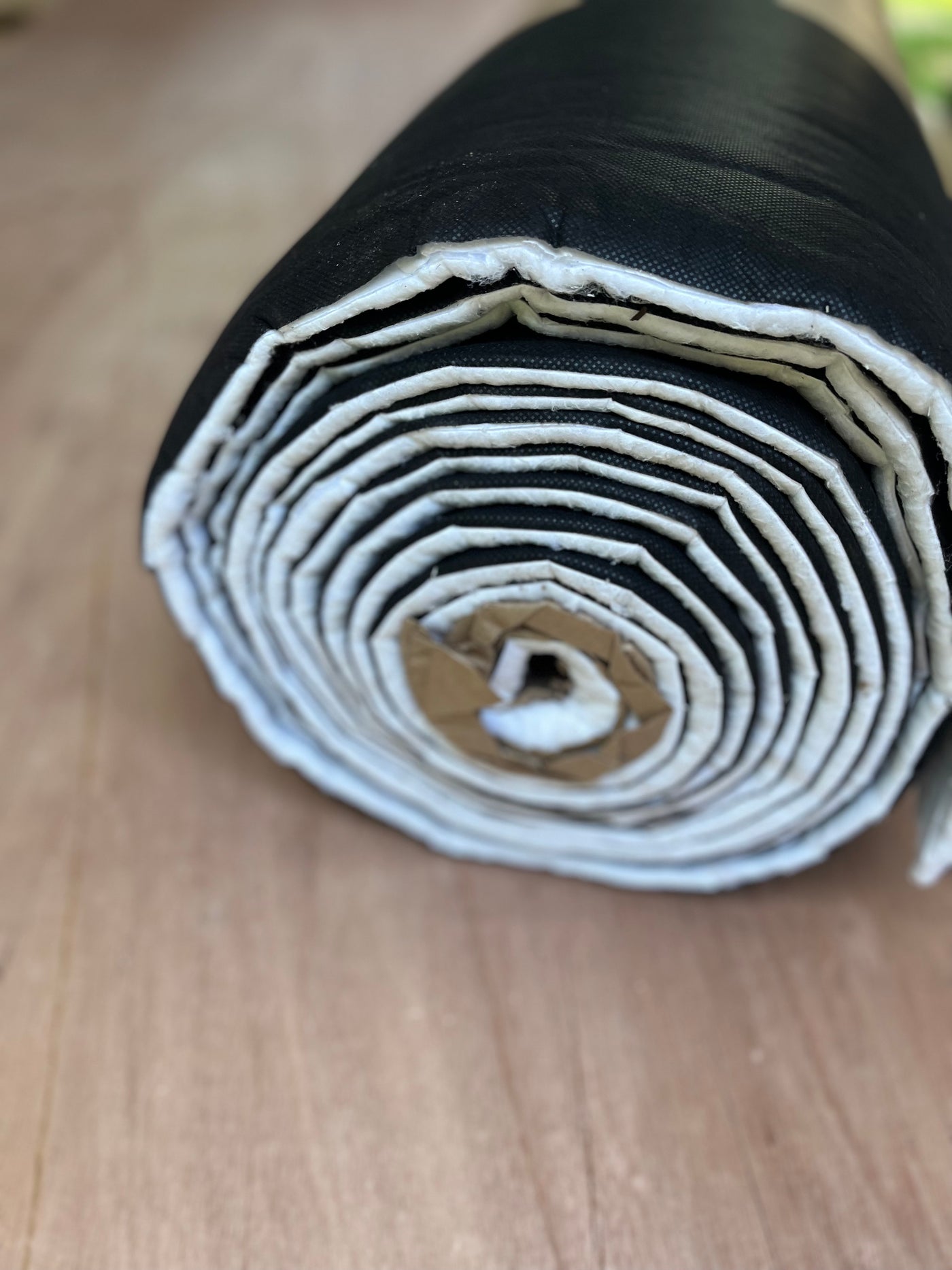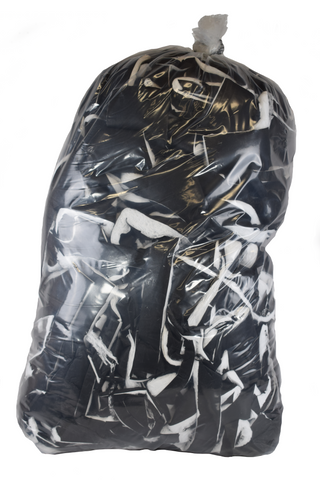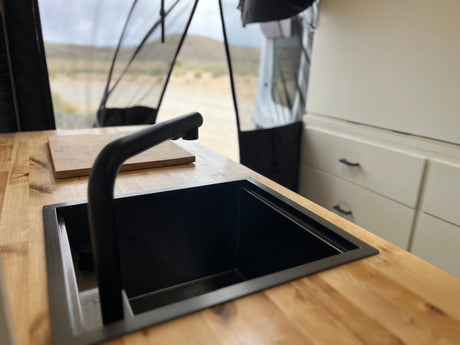Insulating a van is one of the most critical steps in any camper van conversion. Effective van insulation not only keeps you comfortable by providing a barrier against temperature changes but also helps reduce moisture and condensation—key factors in preventing mold and prolonging the life of your build.
When it comes to camper van insulation, options range widely based on your needs and budget. For eco-friendly solutions, Havelock Wool offers a natural, sustainable alternative using sheep wool insulation, while foam spray and foam board are popular choices for those seeking the cheapest van insulation. But what’s the best insulation for a camper van?
For wall and ceiling insulation, high-quality materials like 3M Thinsulate provide excellent performance with a high R-value, 1-2" thickness, moisture resistance, and sound-dampening properties. Meanwhile, floor insulation benefits from low-profile materials, such as insulating foam or Coosa board, to maintain headroom while offering effective thermal insulation protection.

Choosing the Best Van Insulation
When it comes to the best van insulation, 3M Thinsulate stands out as a top choice for camper van conversions. Thinsulate insulation offers high thermal performance, is lightweight, and easy to install, making it ideal for insulating a van. Made of hydrophobic fibers, Thinsulate resists moisture, mold, and mildew, and provides effective thermal and sound insulation.
Thinsulate insulation offers an impressive R-value of 5.45 per inch (RSI 0.96), combining polyester and polypropylene fibers to deliver top-notch insulation. The fine polypropylene fibers absorb high-frequency noise while minimizing weight, and the polyester fibers reinforce the material’s durability. Together, these fibers form a non-woven structure that blocks sound and keeps your Sprinter or camper van well-insulated against temperature changes.

For optimal results, we recommend applying a radiant heat barrier to the van's metal walls before installing Thinsulate insulation. This extra step helps reduce heat transfer, protecting against extreme temperatures from the sun. Materials like Reflectix (a budget-friendly option) or Lizard Skin (a more robust heat barrier) are popular choices.
Remember, the metal walls of your van will conduct external temperatures directly. Consider the climates and seasons in which you’ll be traveling. For hotter conditions, using both a radiant heat barrier and insulating all open cavities will improve comfort and efficiency within your camper van.
How much insulation is needed to insulate your camper van?
Determining Amount and Type of Thinsulate Needed to Insulate Van Walls and Ceiling
The quantity of Thinsulate needed for your Sprinter van walls and ceiling depends on factors like the van’s size (roof height and wheelbase length), the climates you’ll encounter, and your build plan. For optimal insulation, we recommend 3M Thinsulate SM600L (single scrim) or AU6002 (Double Scrim) for the walls and ceiling of your van for optimal insulation.
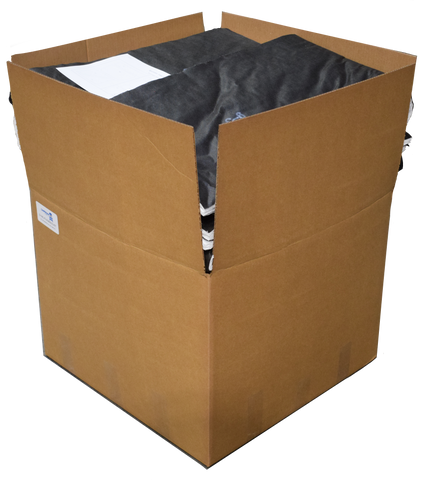
Thinsulate insulation amounts by van model:
- ProMaster 136 - 35-40 ft
- ProMaster 159 - 40-45 ft
- ProMaster 159 Ext - 45-50 ft
- Sprinter 144 Low - 35-40 ft
- Sprinter 144 High - 40-45 ft
- Sprinter 170 - 50-55 ft
- Sprinter 170 Ext - 55-60 ft
- Transit 148 - 40-45 ft
- Transit 148 Ext - 55-60 ft
- Transit Mid Roof - 45-50 ft
Please note these averages are our minimum recommended length to fill your van cavities.
Want a little extra insulation for your camper van pillars but looking for the cheapest van insulation?
Check out our Thinsulate Scrap Bag for a great value for extra insulation.
Pre-cut 3M Thinsulate Van Insulation Kits
Want to skip the cutting and measuring process of your van insulation install? We can help.
Our 3M Thinsulate van insulation kits make insulating your camper van simple and effective. Designed in-house by our talented team with input from a network of PRO builders, our kits have been thoroughly researched, tested, and perfected for top performance. We now offer insulation kits specifically designed and precisely cut with a CNC router for Sprinter vans, ProMaster vans, and Transit vans, ensuring an ideal fit and reliable insulation for every build.

Determining Amount of Insulation Needed for Van Floors
Just like van walls, the camper van floor is a key area for heat and cold conduction. In winter, a poorly insulated floor can become ice-cold, making the entire camper uncomfortable. Since heat rises, the floor often remains cold if left uninsulated, creating an uncomfortable environment inside your camper van.
To properly insulate the floor, start by adding a barrier material to reduce cold transfer from the metal. Next, install a layer of insulating board beneath the subfloor. While many van conversions use plywood as a base over the insulation for a finished floor, insulating Coosa Board is considered one of the best options for camper van floors, providing both insulation and sub-floor stability in-one.
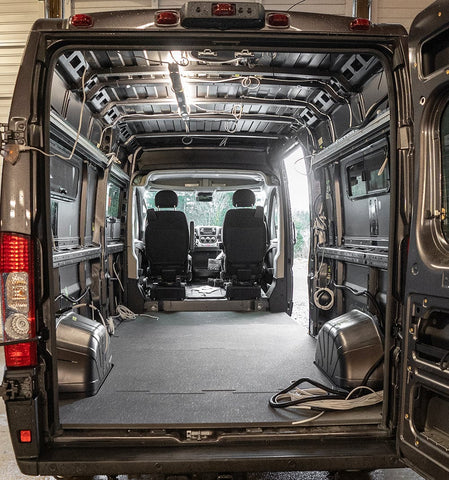
We offer 2 types of insulating Coosa Board pre-cut van flooring:
- Rainier Pre-cut Van Flooring: Offers pre-cut Coosa board sub-floor and optional add-on top-floor.
- Columbia Van Flooring Kit: Offers pre-cut Coosa board sub-floor, cnc engraved for heated flooring, includes:
- PEX tubing
- Adhesive
- Aluminum heat transfer plates
- Plates to cover unused exits
- CNC routed fiberglass-reinforced closed-cell foam subfloor
- CNC-etched 1/4" plywood overlay floor, mapped with tubing layout
- Optionally, CNC-cut 2Tec2 or Lonseal topfloor

Thinsulate Cost Per Foot
We offer
See the graphic below for 3M Thinsulate cost per foot:

Insulation Adhesive for Van Walls
For a secure and durable installation of Thinsulate insulation on van walls, using a high-quality insulation adhesive is essential. Many DIY van converters choose 3M 90 spray adhesive for its reliability and strong bond.
To apply Thinsulate with 3M 90 adhesive, spray both the van wall surface and the back of the insulation material. Allow about one minute for the adhesive to become tacky before pressing the insulation firmly in place. This method ensures a lasting bond, keeping your van insulation secure and effective.

How to Install 3M Thinsulate
Check out this how-to video by our affiliate partners, Scho and Jo, about installing our 3M Thinsulate Sprinter Insulation Kit:
Conclusion
Insulating your camper van with the right amount and type of 3M Thinsulate is crucial for creating a comfortable and efficient living space on the road. Properly installed van insulation not only enhances thermal performance but also reduces noise levels and prevents moisture buildup. With quality insulation on your van walls, ceiling, and floor, along with the right insulation adhesive and optional heat barriers, you can enjoy a cozy interior that’s protected against both hot and cold climates—keeping you comfortable wherever your travels lead.

